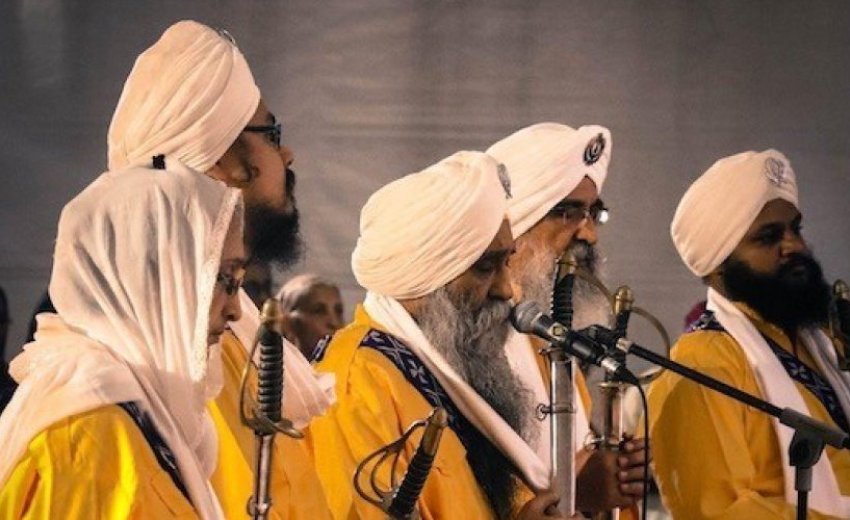Can women participate in the Amrit Sanchar jatha? This is a question that might have crossed the minds of multiple Sikhs, both the elderly and the youth. Well, it was a key topic discussed at a gathering of a Malaysian Sikh organisation that has run Sikh camps in Southeast Asia for more than five decades.
All about Amrit Sanchar
The Khandey-da-Pahul, also known as the amrit sanchar, is the Sikh initiation rite. A team of five Sikhs who are themselves initiated prepares sweetened water as part of the process while reading a set of Sikh verses. The ceremony was first instituted in 1699 by Guru Gobind Singh, the tenth Guru.
Women were probably not involved in the preparation of the Khandey-da-Pahul, as was the case with many other things back then. But how about right now? Does the Sikh Reht Maryada (Sikh code of conduct) permit it? This issue was brought up during the annual general meeting (AGM) of the Sikh Naujawan Sabha Malaysia (SNSM), which was held in Kuala Lumpur on September 19, 2020.
The Kuala Lumpur-based organisation permits participation by women in the initiation ritual. Women have been recruited to work in the Amrit Sanchar jatha, or the team that prepares the Khandey-da-Pahul, for a number of years (amrit). It remains a no-go area for women in many regions. The SNSM jatha had prepared the Khandey-da-Pahul on several occasions throughout Malaysia and in the neighbouring countries of Thailand and Indonesia.
Instances of retaliation by Sikh Organizations
Instead of the progressive initiatives taken by some gurudwaras, there had been some opposition. In the past, at least two gurdwaras had disapproved of women attending. Some of the ablakhis (persons coming for initiation, i.e. those who came to partake amrit) raised the concern in one gurdwara.
Commenting on the same, Jaswant Singh, the out-going coordinator of the SNSM Amrit Sanchar Jatha, told Asia Samachar, “In the first incident, we reluctantly agreed to carry on. After the ceremony, we explained to those who had just taken amrit that there was nothing wrong with the participation of women,”
Again, an incident happened during a gurdwara's inaugural ceremony. Jaswant Singh shared the experience and said, “In the second incident, we were told a few days before the event that they didn’t want women in the Panj Pyare jatha. We tried talking to them, but to no avail. We then decided to decline the invitation.”
Initiative to ensure equal rights
As a result of the incidents, Jaswant and Hardev Singh Mahinder Singh, another key member of the SNSM Amrit Sanchar Jatha, decided to bring a motion before the organisation's general house in order to reach a firm decision on the subject. In a motion entitled ‘Proposal to stop discrimination in any whatsoever manner against women,’ they said that they found that some gurudwara committees and Sikh organisations believe that women should not be a part of the Amrit Sanchar Jatha.
As a part of the motion, they proposed to support the active participation of women in Amrit Sanchar Jatha of SNSM whether it is the opening of a new Gurdwara, keeping of foundation stone or when Amrit Batha is prepared. All kinds of discrimination against women must be stopped. Equal status should be given to women as advocated by Sri Guru Granth Sahib.
After a debate, the motion to permit women to participate in the Amrit Sanchar jatha was approved by a resounding majority of the general house. Only a few members had voiced opposition to the motion.
What Sikhism says about women's participation
Jaswant, a lawyer, stated that the Sikh code of conduct clearly states that women were allowed to participate in the Khandey-da-Pahul ritual. He stated that both the Guru Granth Sahib and the Sikh Reht Maryada are unambiguous on this matter. He said. “It can even be five ladies preparing the amrit batha.”
Article 24 (b) of the SRM describes the Sikh initiation. It stated that wherever ambrosial baptism is to be conducted, the holy Guru Granth Sahib should be installed and ceremonially opened. Six devoted, baptised Sikhs should also be present, one of whom should sit in the presence of the Guru Granth Sahib and the other five should be there to perform the ambrosial baptism. These six may even include Sikh women. Everyone must have bathed and washed their hair.
One member at the AGM requested that SNSM seek clarity from the Akal Takht as to whether women were specifically permitted to join the five who prepare the Khandey-da-Pahul, or only to join the Amrit Sanchar jatha to assume other duties, such as granthi or pehrey-dar (watch persons). The majority rejected the request.
Coordinator but not Jathedar
Jaswant, who assumed leadership of the SNSM Amrit Sanchar Jatha in 2018, stated that a lot of modifications have been made. He does not identify himself as the jathedar (literally, group leader), but rather as the coordinator. They have around fifteen members.
Jaswant said that when an event occurs, approximately eight members will step forward. They would select one among themselves to assume the position of Maukhey Dah Jathedar (ceremony chief). This individual will take the initiative and make decisions. After the ceremony, he will step down from his position, he stated. This permits more members to assume leadership positions.
He further stated that it was the responsibility of the newly elected SNSM jathedar and his staff to observe and implement the overwhelming affirmative vote for women's participation in Amrit Sanchar moving ahead. As always, we are prepared to serve, he remarked.
The Sikh community has gradually started taking initiatives to be more inclusive and promote diversity. The inclusion of women in Sikh traditions and rituals is a step towards the goal of achieving equality in the community in the literal sense. Going forward, we hope to see more such initiatives taken by the members of the community.
*Based on an article published in Asia Samachar on 25th September 2020

